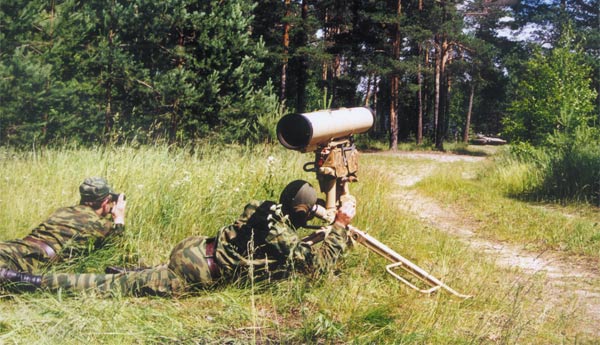Russian Design Bureau KBP Developing New Anti-Tank/UAV Missile
The KBP Instrument Design Bureau, which is part of the Rostec Defense group, has started developing a new missile that they state will be the world’s first multi-purpose anti-tank AND anti-Unmanned Aerial Vehicle (UAV) guided weapon system.
According to Bekkhan Ozdoev, Industrial Director of the Rostec State Corporation, the new design will be “…a multipurpose defensive and assault weapon capable of effectively hitting both traditional targets such as tanks or armored vehicles, but also a whole range of previously unattainable targets such as unmanned aerial vehicles.”
KBP states that though certain brands of anti-tank missiles are capable of shooting down aerial targets, these are limited to large and low-speed vehicles such as helicopters. Hitting drones and UAVs is a much more demanding scenario because of their small size, maneuverability and low thermal signature. KBP states that there are no anti-tank systems in service anywhere in the world that is capable of reliably engaging unmanned aerial vehicles.
The new missile will combine both thermal and optical seeker technology, and Ozdoev also noted that new homing technology with TV-thermal imaging is being created for the new system. The new missile will be a fire-and-forget weapon and KBP is also working to improve the warhead design for its multi-function use, integrating new and improved explosives that are also under current development.
No further firm specifications for the missile were given, or whether it was intended to be vehicle-mounted or a man-portable system. The Russian development comes as many nations digest the result of the Nagorno-Karabakh war fought last year between Azerbaijan and Armenia. The conflict saw UAVs and loitering munitions play a decisive role in breaking the Armenians fortifications and field army. Armenian air defense systems proved particularly exposed to Azerbaijan drones, raising concerns over whether such expensive systems, designed to engage aircraft and helicopters, were now merely sitting ducks.
Already the United States has issued revised specifications for upcoming frontline air defense systems and has begun to take moves to develop a dedicated anti-UAV school to explore new counters and tactics. The Russian approach makes some sense. Instead of adding additional weapon types into the inventory they plan to replace existing weapons with ones that can carry out more of the necessary roles.
With weapon exports still a major contributor to the Russian economy and with more countries needing to build UAV-counters into their field forces, the Russian methodology could prove popular with foreign customers. However, with drones so cheap and their capabilities continuing to increase, the cost of a missile capable of engaging both UAVs and armored vehicles may make it too expensive to be of use against its intended targets.

